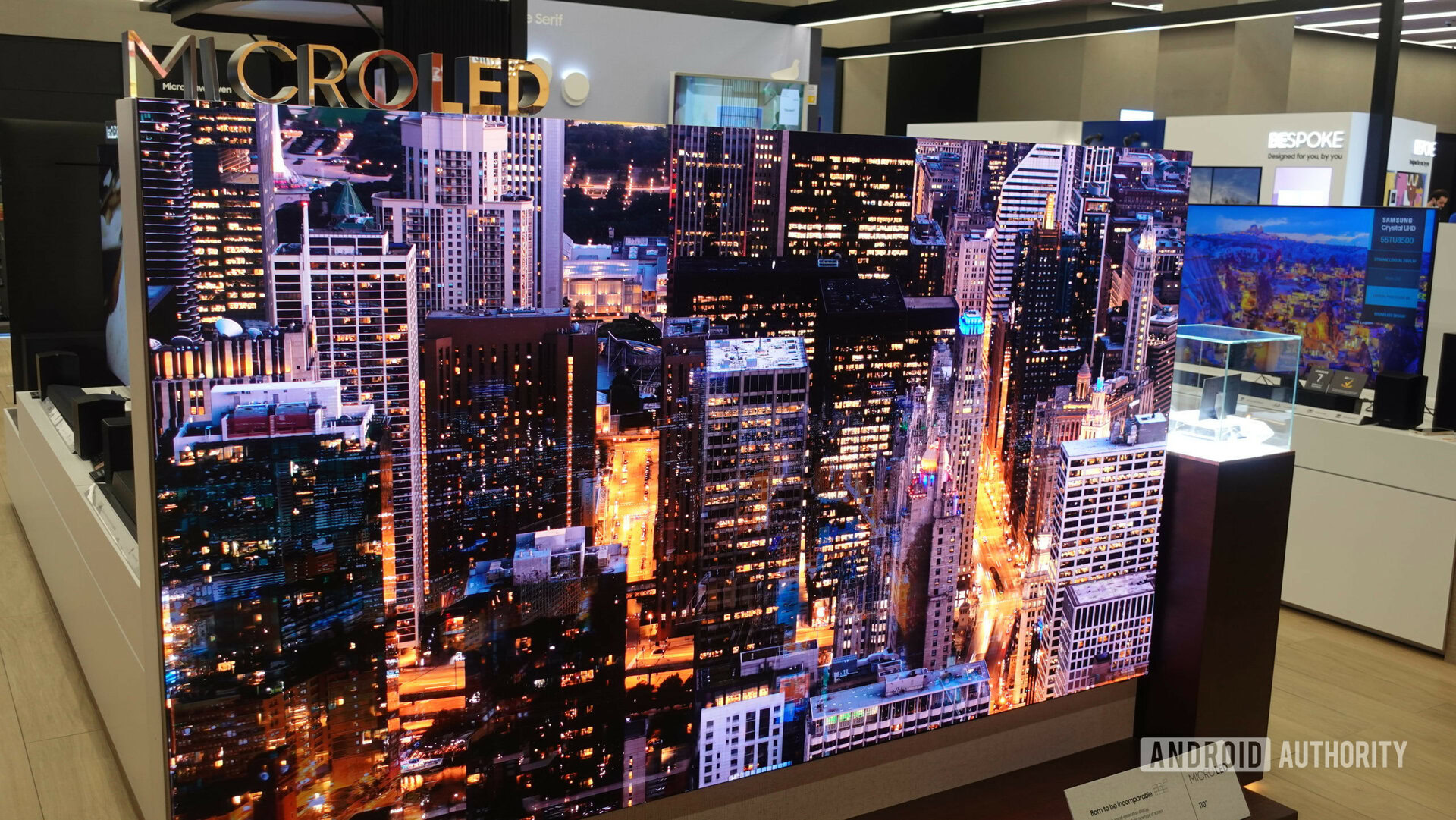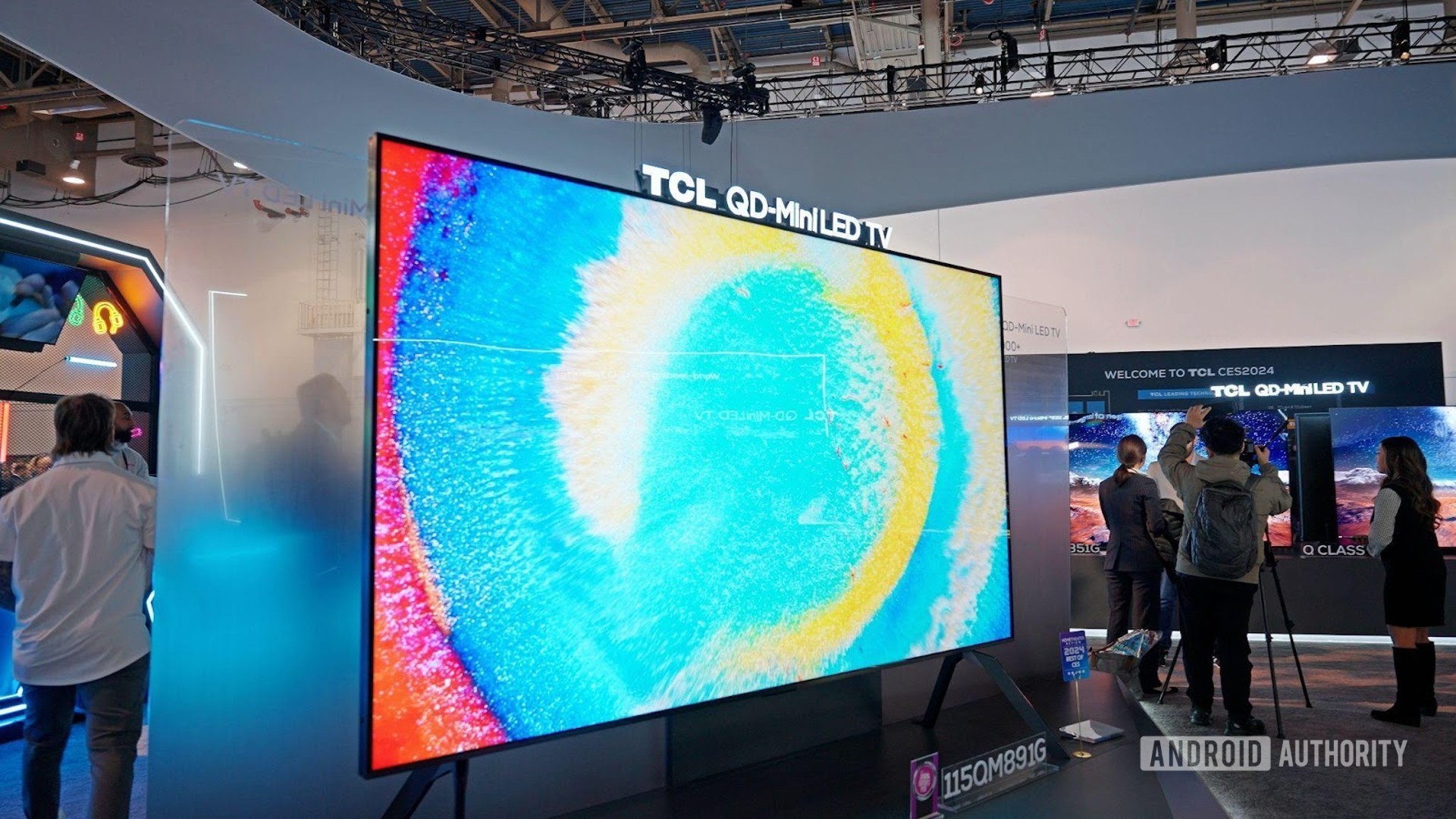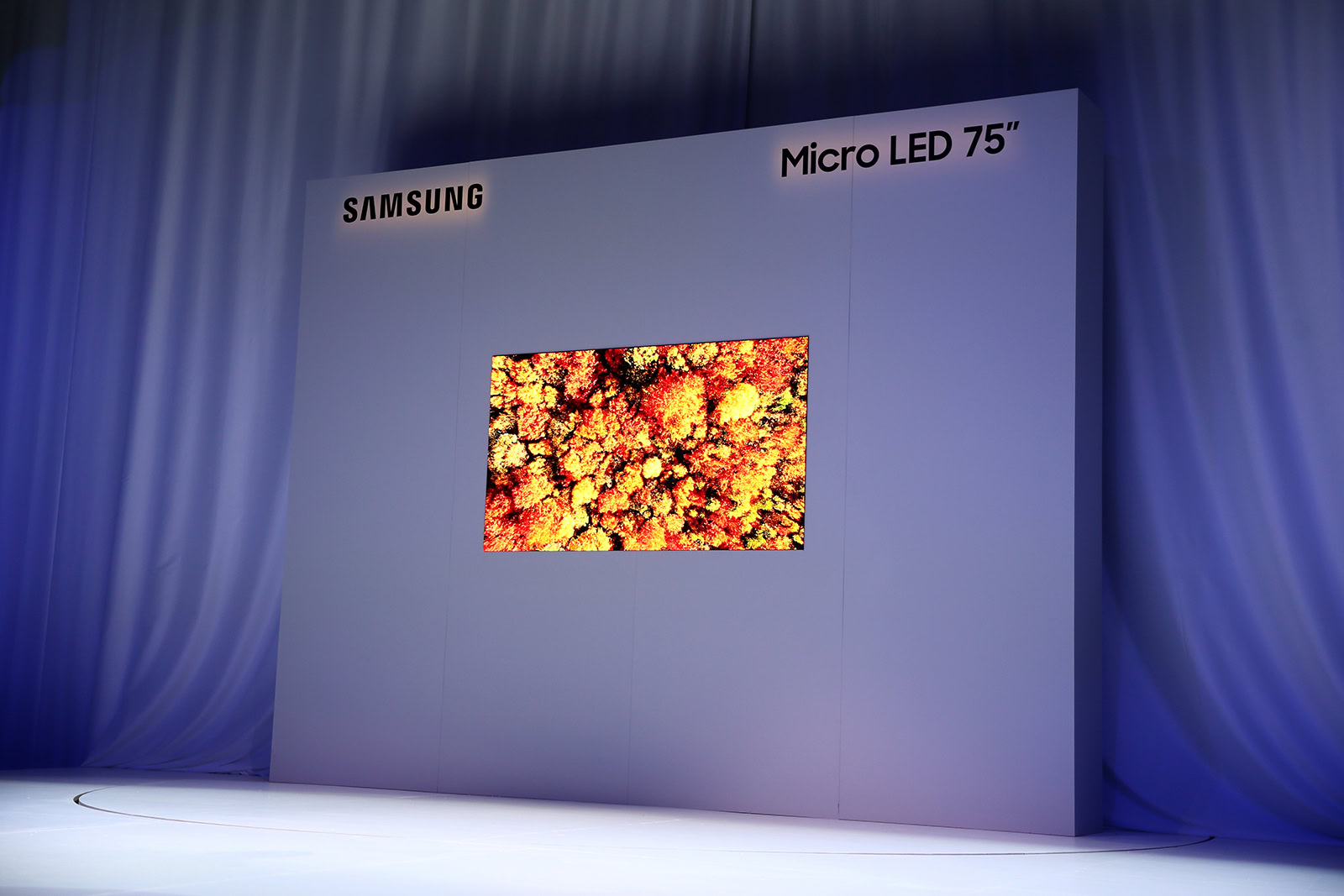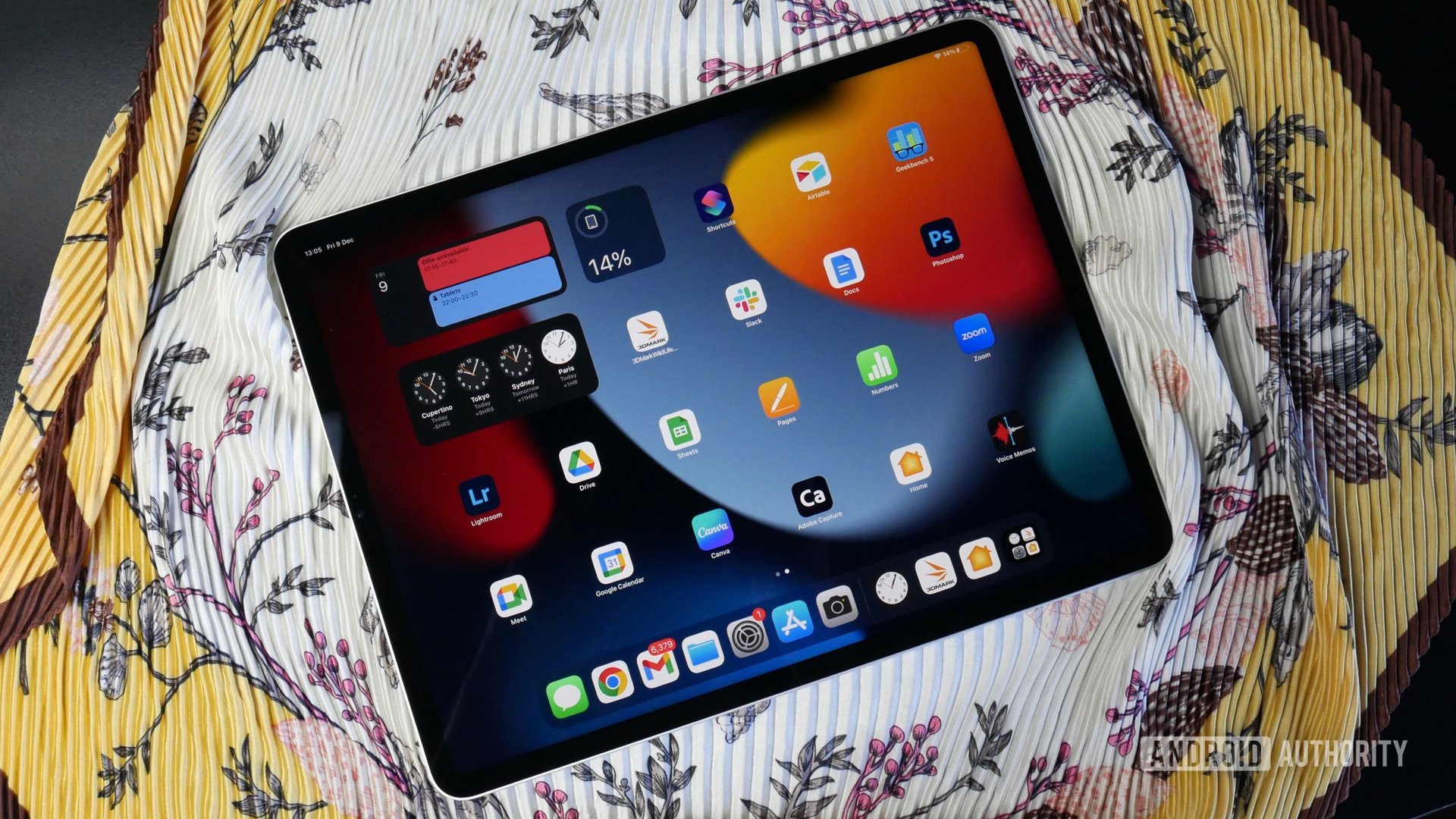Affiliate links on Android Authority may earn us a commission. Learn more.
Mini-LED vs MicroLED: What's the difference and which is better?

The television market has become increasingly complicated over the past few years with new display options like Mini-LED and MicroLED. These emerging display technologies promise superior picture quality and performance compared to traditional LCD displays. As similar as their name might sound, however, they take entirely different approaches to deliver a better-than-LCD experience. So in this article, let’s explore what sets Mini-LED apart vs MicroLED based on their key features, advantages, and potential drawbacks.
Mini-LED vs. MicroLED: How do they compare?

Before we explore the differences between Mini-LED and MicroLED, it’s essential to understand the underlying technology that sets them apart.
Mini-LED is a technology that bridges the gap between traditional LED displays and MicroLED. It utilizes thousands of tiny LEDs as the backlight source for otherwise traditional LCD panels. The upside is that the backlight LEDs are significantly smaller than those found in conventional LCDs, allowing for more precise control over local dimming zones. This results in improved contrast, better color accuracy, and enhanced brightness levels.
MicroLED, on the other hand, is an entirely different technology that doesn’t have any connection or reliance on old LCDs. Instead of relying on a backlight, each pixel in a MicroLED display is composed of micrometer-sized LEDs. These individual light sources are even smaller than traditional LED lights you may be familiar with. Each pixel is in a cluster of three LEDs (red, green, and blue). They create their own color and light, similar to an OLED display. However, it’s worth noting that MicroLED is not the same as Micro-OLED, the latter is a miniaturized version of OLED.
Coming back to MicroLED, their self-emissive nature eliminates the need for a separate backlight. This results in superior contrast ratios, vibrant colors, and near-perfect black levels. MicroLED displays are also known for their high resolution and scalability, making them suitable for both indoor and outdoor applications.
Color reproduction and contrast
Mini-LED displays offer excellent color gamut support and contrast compared to traditional LCD/LED displays. They feature many local dimming zones, allowing deeper blacks and brighter highlights. While Mini-LED can provide excellent picture quality, it may still fall short of the self-emissive capabilities of MicroLED.
MicroLED excels in color reproduction and contrast due to its self-emissive nature. Each pixel emits its own light, resulting in vibrant colors and pixel-level dimming. This technology offers the best-in-class performance regarding color accuracy and contrast ratios.
Brightness

Mini-LED displays can achieve high brightness levels, making them suitable for well-lit environments. They provide an excellent HDR (High Dynamic Range) viewing experience, ensuring that highlights pop and details are preserved even in bright scenes.
MicroLED displays can also achieve exceptional brightness levels, often surpassing those of Mini-LED. This makes them ideal for applications where high brightness is crucial, such as outdoor displays and large video walls. However, they require copious amounts of energy, which eventually gets converted to heat. This is one of the main drawbacks of MicroLED today, and why we haven’t seen consumer devices adopt the tech yet.
Viewing angles
Mini-LED displays typically offer decent viewing angles, ensuring the picture remains clear even when viewed from the side. However, the performance may vary depending on the display’s quality and design. Remember, Mini-LED still relies on decades-old LCD tech to display an image.
MicroLED displays generally maintain excellent viewing angles, similar to OLED screens. This means the picture quality remains consistent from almost any angle, making them suitable for curved displays and immersive setups.
Gaming
Mini-LED and MicroLED technologies can deliver exceptional gaming experiences with low input lag and fast response times. MicroLED’s self-emissive properties have the additional advantage over OLED displays, allowing it to avoid any risk of burn-in when displaying static images (such as a HUD when playing video games). This makes it one of the best screen options for gaming.
Price
MicroLED displays are significantly more expensive than Mini-LED displays due to their complex manufacturing process and the need for precise pixel control. Additionally, the screens are currently only offered in extra large sizes, with an 89-inch MicroLED from Samsung costing a whopping $100,000. Alternatively, a Mini-LED display is much more affordable, with models like the Samsung Neo QLED line starting just above the $1,000 price point.
Mini-LED vs. MicroLED: Which is better?

As of now, we don’t have the option between MicroLED and Mini-LED as only the latter is available on store shelves. You may see a MicroLED display at Samsung’s flagship stores, but most people aren’t willing to shell out tens of thousands of dollars for one. However, this is set to change as display makers have already succeeded at making smaller, TV-sized MicroLED displays over the past couple of years. We’ll likely see the display tech trickle down to the mass market in a few more years, similar to OLED’s journey in the early 2010s.
Still, if you’re not looking to wait, Mini-LED is a compelling alternative. It doesn’t offer pixel-level accuracy but the contrast and brightness on offers are second only to OLED. Mini-LED also doesn’t suffer from burn-in or image retention, unlike OLED, potentially making it the most durable high-end display option available today.
FAQs
Mini-LED displays are less susceptible to burn-in than OLED screens, but it is still theoretically possible under extreme conditions. MicroLED displays are less prone to burn-in due to their self-emissive nature, making them a safer choice for applications with static content.
Both Mini-LED and MicroLED displays have the potential for a long lifespan, often exceeding that of traditional LED displays. However, the actual lifespan may vary depending on factors such as usage patterns and manufacturing quality.
Mini-LED and MicroLED displays offer some advantages over OLED, such as improved brightness and potentially longer lifespan. However, OLED screens are known for their self-emissive properties, which can result in deeper blacks and more vibrant colors. The choice between these technologies depends on your specific preferences and requirements.